Prayagraj: After a leisurely sattvik breakfast in their luxury tent, Pankaj Bakshi and his family set off on a private boat to the ‘VIP Sangam’ at the Maha Kumbh in Prayagraj. Far from the packed riverbanks, where tens of thousands jostled for a holy dip, they had their own exclusive spot. The new coveted VIP Sangam was at the confluence of the Ganga, Yamuna, and Saraswasti, right in the middle of the stream.
The NRI family from Dubai took their holy dip far from the madding crowd. Welcome to Elite Kumbh. No stampeding devotees or police with lathis. This, their tour organiser assured them, was the “real Sangam”, and it came at a hefty tag of Rs 5,000-10,000, depending on the boat and its facilities. It was Bakshi’s first Kumbh experience.
“We were apprehensive about the crowds. We had seen the crowded streets of Kumbh in reels, but we were not part of it. The facilities provided here—we never imagined it would be like this,” said Bakshi, who works for a financial consultancy in Dubai and had flown in just to experience the Maha Kumbh.
For decades, the Kumbh was seen as a congregation for the pious and the poor. But this time around, the privileged are getting a special place. The Uttar Pradesh administration has turned it from a rural, bottom-of-the-pyramid phenomenon into an elite experience, one that is prideful and matches the country’s mood. It’s a glamourised and rarefied experience for NRIs and high net worth Indians who want a slice of the Kumbh without the masses and mayhem. It’s as if the Four Seasons met the Kumbh on the Ganges. Even the stampede on 29 January, which killed at least 30 people, did not burst this bubble of exclusivity.
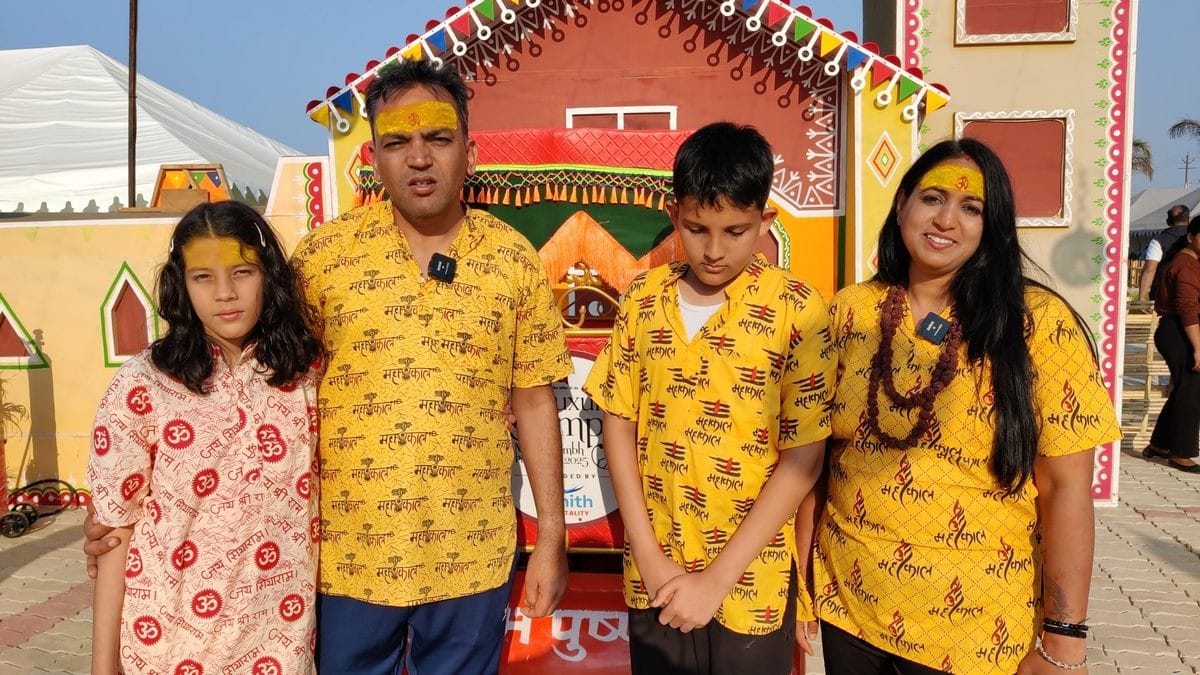
It’s a very different Kumbh—in look and experience. A tent city for the rich dotted with luxurious Swiss chalets, five-star facilities, wide roads, palm-lined river-view boulevards, helicopter rides, carpeted luxury tents, bathtubs, all-you-can-eat buffets, and private VIP ghats. The guests aren’t just bliss-seeking Eat-Pray-Love foreigners but Indian families like the Bakshis.
We have witnessed unprecedented occupancy rates and as a result generated substantial revenue for the hospitality sector, creating new opportunities for entrepreneurs
-Manoj Mishra, head of Zenith Hospitality
“People always had an image that Kumbh was chaotic, crowded, and meant just for rural or middle-class families. This time, time we have worked to break this notion,” said Manoj Mishra, head of Zenith Hospitality, which was contracted to put up tents by the India Tourism Development Corporation (ITDC). All 80 tents on offer have been booked.
“In earlier Kumbhs, luxury facilities were not there, so people like us avoided coming,” said Bakshi.
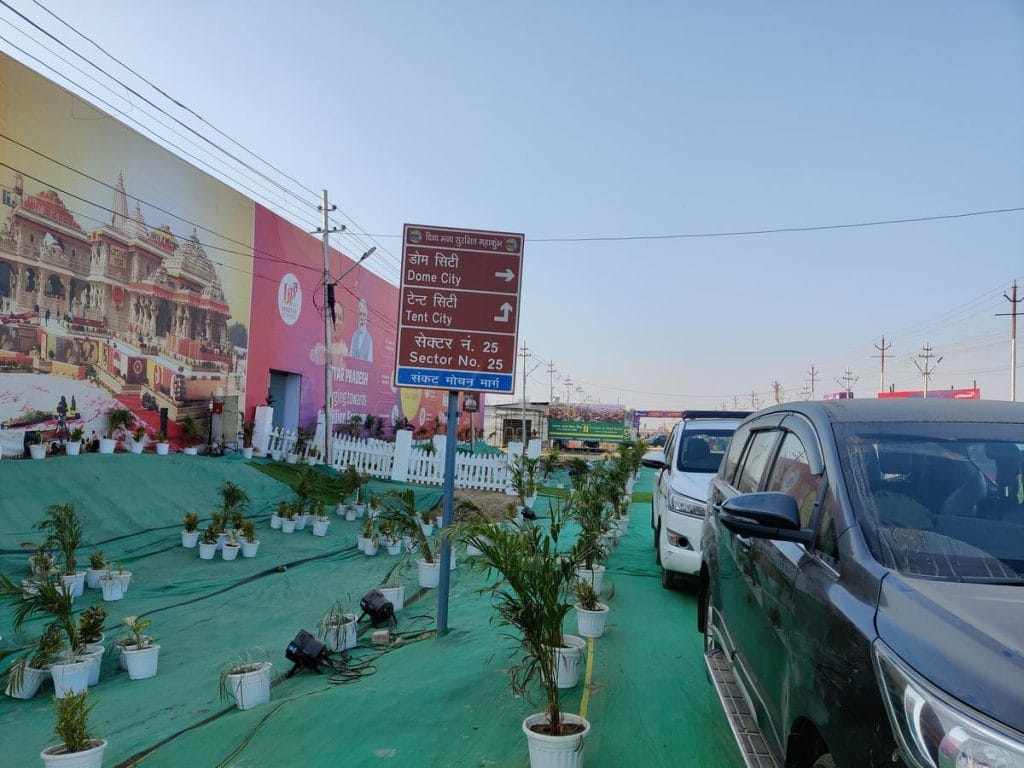
Also Read: I saw a Maha Kumbh stampede in the making during the first Shahi Snan
Five-star spirituality
When Zenith Hospitality got the contract from ITDC in September, Mishra had barely three months to set up the ultra-luxury tents.
It had to be more than the usual resort experience offered at beaches and mountains. Setting up ensuite bathrooms with tubs, rain showers, hot and cold water—all the trappings of a five-star stay—was the biggest challenge.
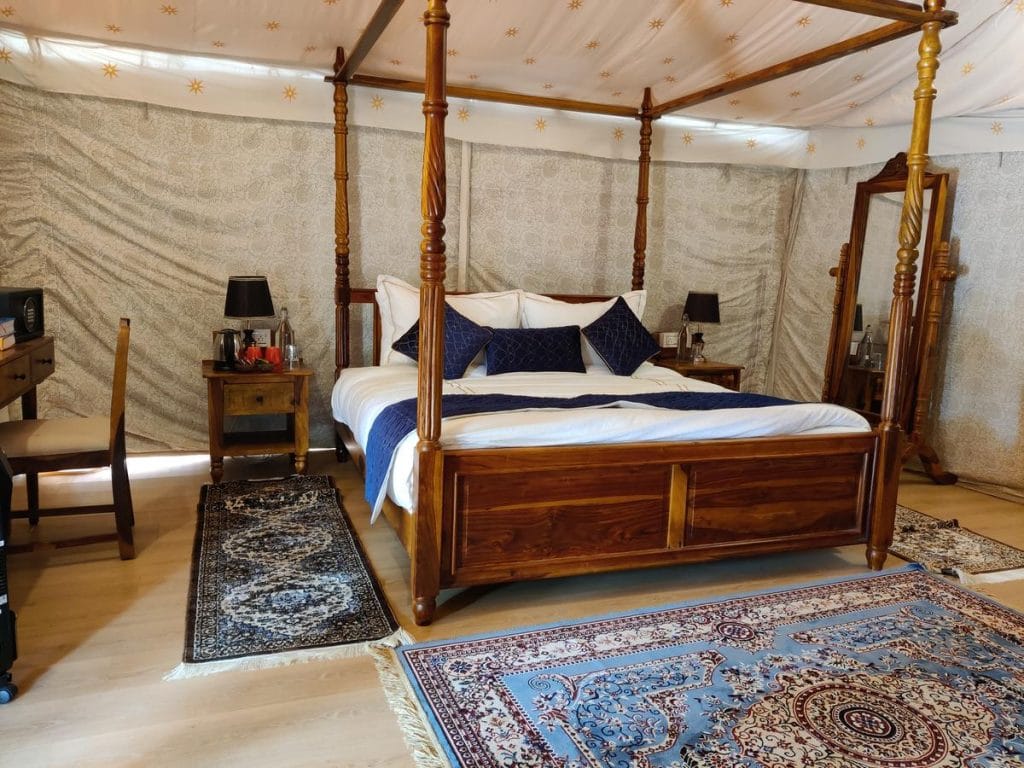
“We had to build a drainage system from scratch,” said Mishra. Bit it was well worth the effort. He also wanted to celebrate local cuisine. And so, laung lata was sourced specially from Benares, litti choka from Purvanchal, and malliyo was made fresh with milk. More than a hundred staff waited on guests, along with a team of seven chefs catering to their palates. ITDC even opened their kitchens to devotees who wanted to learn how to prepare traditional dishes.
Sandeep Gupta, a financial consultant from Mumbai, tasted laung lata—syrup-covered fried dough laden with khoya and nuts—for the first time at the Kumbh. It was a revelation. He never expected to be served local delicacies. He had braced himself for Chinese-Indian fare and dal-rice. Instead, on 26 January, he was served tiranga pulao—tricoloured rice cooked in ghee with lashings of elaichi, cloves, and saffron.
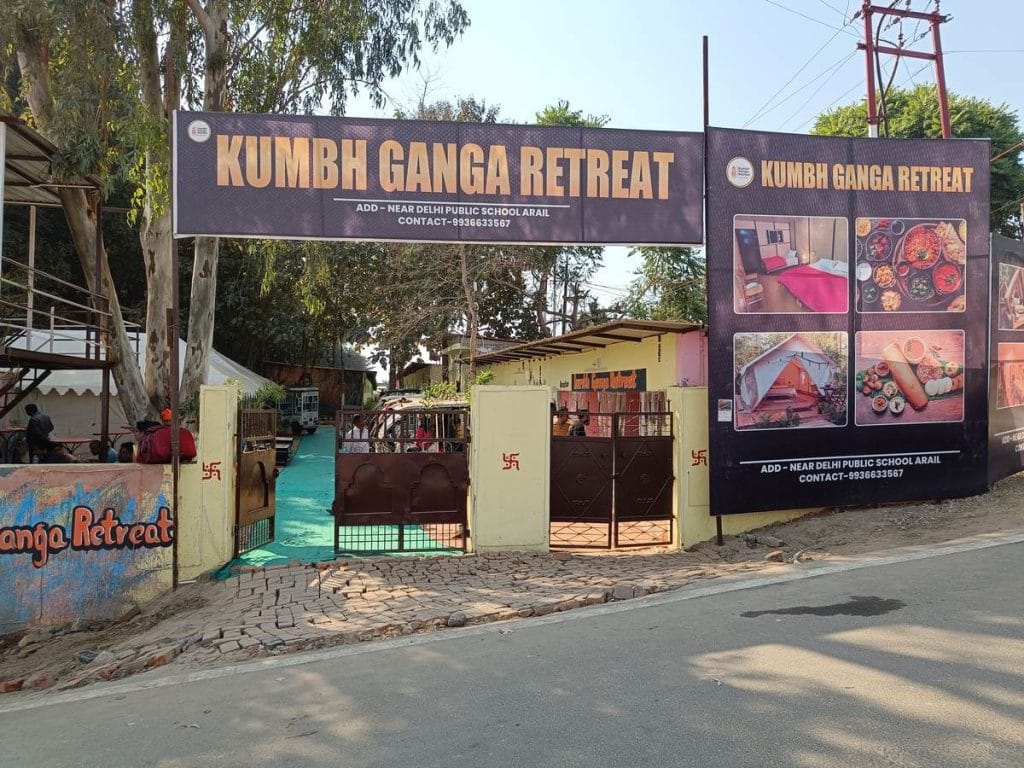
Even Mishra was surprised by the flood of requests they got when they opened for booking in December. Within hours, all the tents were booked for the first five days of the Kumbh. He had to turn people away.
With less than a month before the Kumbh wraps up on 26 February, demand is still surging. ITDC is now adding 15 more luxury tents. It has an edge over its competitors as it sits right on the banks of the Ganga. Guests can sign up for yoga, meditation, wellness sessions, and spa treatments in its deluxe suite camp, super deluxe suite camp, premium suite camp, and super premium suite camp.
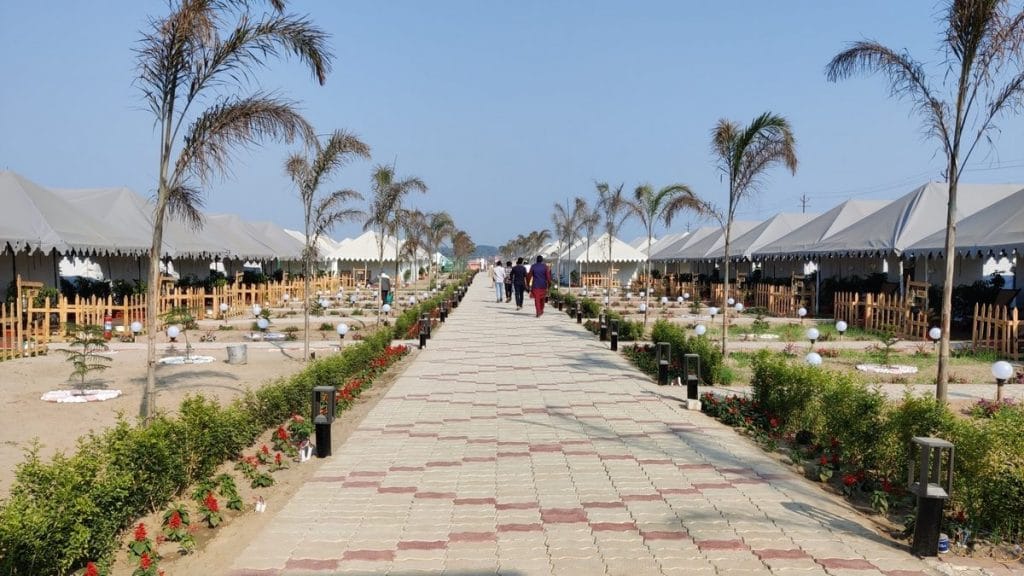
“We have witnessed unprecedented occupancy rates and as a result generated substantial revenue for the hospitality sector, creating new opportunities for entrepreneurs,” said Mishra.
This gilded, luxurious religious tourism is the next big thing in the hospitality sector, said local entrepreneurs. Manish Kumar realised its potential after setting up a tent city called Ganga Retreat in Varanasi in 2021.
It does not seem like Kumbh. Such open and empty roads. The gap between the rich and the poor has come into religion as well
-Mukesh Singh, Kumbh visitor
“After the Kashi Vishwanath temple corridor makeover, people started coming to Varanasi to stay here. But there was no proper arrangement for them, so we thought of setting up a tent resort,” said Kumar.
When the Ram Mandir was thrown open to the public last year, he set up luxury cottages for devotees along the banks of the Saryu. And now, he has set up 36 cottages in the VIP ghats of Prayagraj for the Kumbh.

“My rooms are for the upper middle class who may not be able to spend Rs 1 lakh a night,” he said. He has priced his one-room cottages at about Rs 20,000 a day, with food, private parking, a visit to the Sangam, and a cultural tour of akharas. The cottages aim to recreate a ‘simple’ village experience, complete with grass floors. Guests can gather at an outdoor lounge area, sip on lemonade, and watch the sun set on the Sangam.
Kumar and his team started praying for the Kumbh a year ago. “As soon as the tender came, we applied for it. It’s an opportunity for us to expand our business,” he said.
For the Uttar Pradesh government, this could be the blueprint for other religious festivals and temple towns.
“An entire economy is being born in a new way,” said a government official who did not want to be named. He estimated that the hospitality sector is projected to generate about Rs 2,500 crore in revenue during the Maha Kumbh alone. “Our focus is to bring all the sections, from poor to super-rich, under the same umbrella. But separate arrangements have been made for VIP people.”
Luxurious ‘rusticity’
For Sandeep Gupta, a financial consultant from Mumbai, the Maha Kumbh was a chance to explore his spiritual side—in the lap of luxury. Like the Bakshis, he came just for a day and night, booking himself into a premium ITDC tent at Rs 50,000 a day.
“This luxurious oasis provided a unique blend of comfort, convenience, and spiritual enrichment,” said Gupta. It was his first visit to the Kumbh, and while he was paying a premium for this rarefied experience, he marvelled at the “rusticity” of his accommodation. The 550 sq ft tent had a handmade cloth roof, a private shaded seating area, and traditional wooden floors. A heater kept the room cosy, and free WiFi ensured he stayed connected to the world outside.
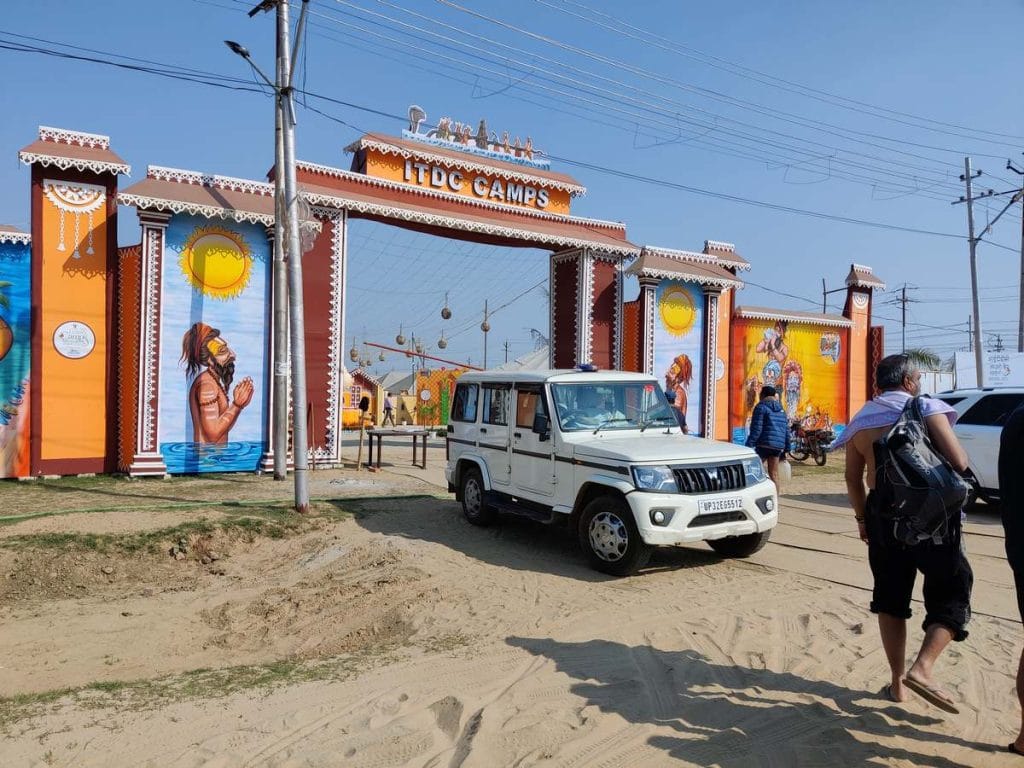
“The experience is surprisingly very positive. This is one of the best tents I’ve lived in,” said Gupta.
Mishra, who designed the look, took inspiration from a village in Uttar Pradesh. “Each kutiya features stylish en-suite bathrooms and rich textiles in rust and burnt orange, reflecting central Indian design,” reads the description on the ITDC website. It describes the site as ‘Mahakumbh Gram: The Ideal Pilgrimage Stay for Sacred Comfort’. Thousands of trees were planted in the area to bring guests closer to nature.
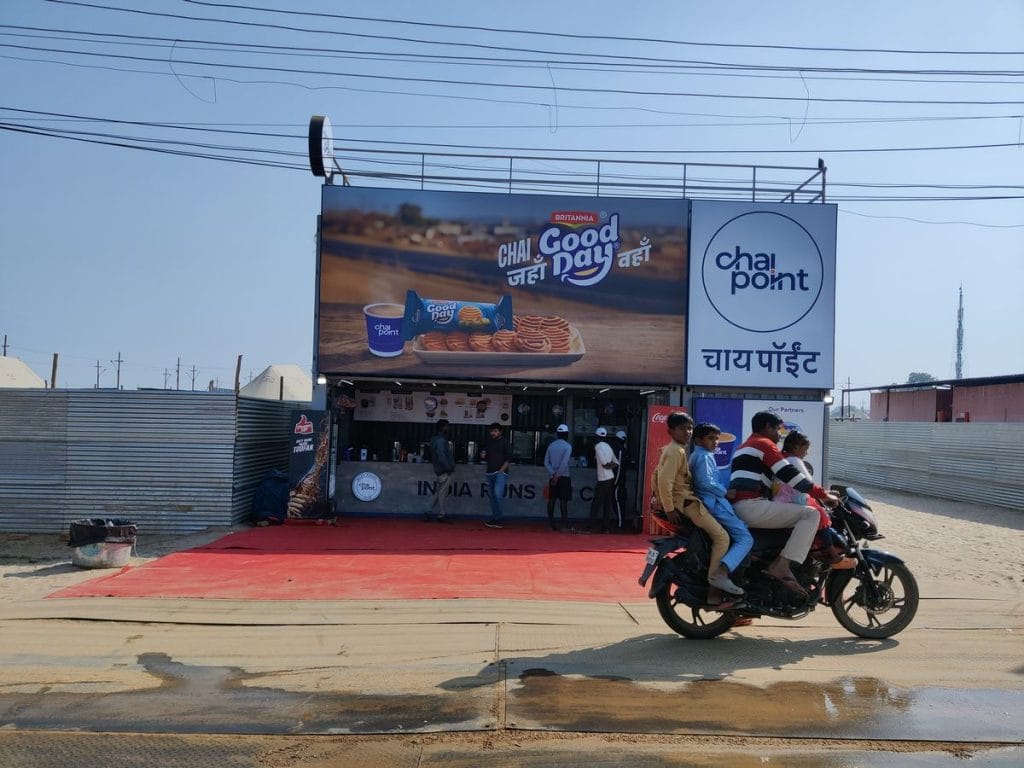
“We plan a whole day for our guests so that not even a single moment of theirs is wasted,” said Mishra. “We organise yoga and meditation camps in the morning, a chaupal for spiritual talks and cultural programs, Ganga Aarti in the evening, and a guided tour of Kumbh Mela where we take guests to the akharas and introduce them to the saints.”
The tent city spans more than a kilometre. One of its most striking sections is ‘Dome City’, with 176 fully equipped cottages, all serving sattvik food. A post on the official MahaKumbh X account extols it as a “one-of-a-kind luxury experience amidst the divine confluence”.
Experience the First-Ever Dome City at Mahakumbh 2025. Prayagraj welcomes you to a one-of-a-kind luxury experience amidst the divine confluence!
– Dome-shaped accommodations with a stunning 360° view.
– Blending tradition, culture, and modern luxury.
– Book your spot online –… pic.twitter.com/dsUqZoiUzg
— Mahakumbh (@MahaKumbh_2025) December 26, 2024
Dome City has been built with high-tech 360-degree polycarbonate sheets. According to UP officials, the structures are bulletproof and fireproof, with cottages and tents priced at around Rs 1 lakh per night.
Also Read: Maha Kumbh and India’s new-age sadhus—riding Bullets, making Reels
A tale of two Kumbhs
Even after at least 30 people died and dozens were injured in a pre-dawn stampede this week, demand for the luxury Kumbh experience hasn’t dipped. A few luxury accommodations said there were one or two cancellations, but otherwise it was business as usual. Most bookings are from India, said tour operators.
Megan, a documentary maker from the United States, and her daughter are among the few foreigners in this exclusive part of the Kumbh.
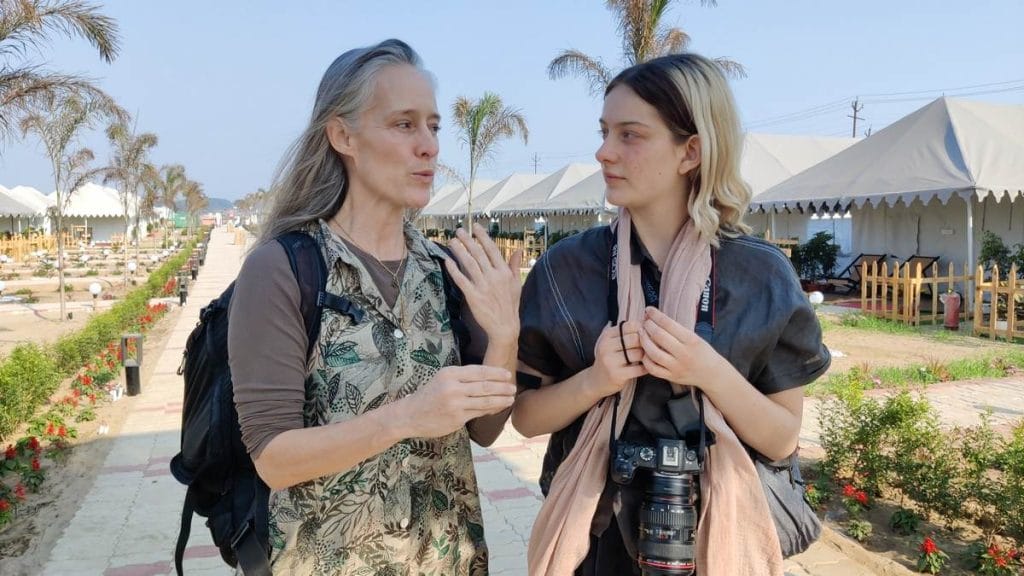
“We had initial apprehensions about the crowds, so we decided to stay at the ITDC facility. It’s been a divine experience,” said Megan while on her way to the Sangam in a boat. There were just three other guests on board.
It’s a far cry from the scenes unfolding on the other side of the Ganges, where crores of devotees congregate for the holy dip and other rituals. While guests in the VIP sector sip freshly squeezed nimbu pani, eat food cooked in pure ghee, and sample laung latas, devotees on the other side jostle for space, queue up outside public washrooms, and munch on chana, bhelpuri, and moongfali from roadside thelas.
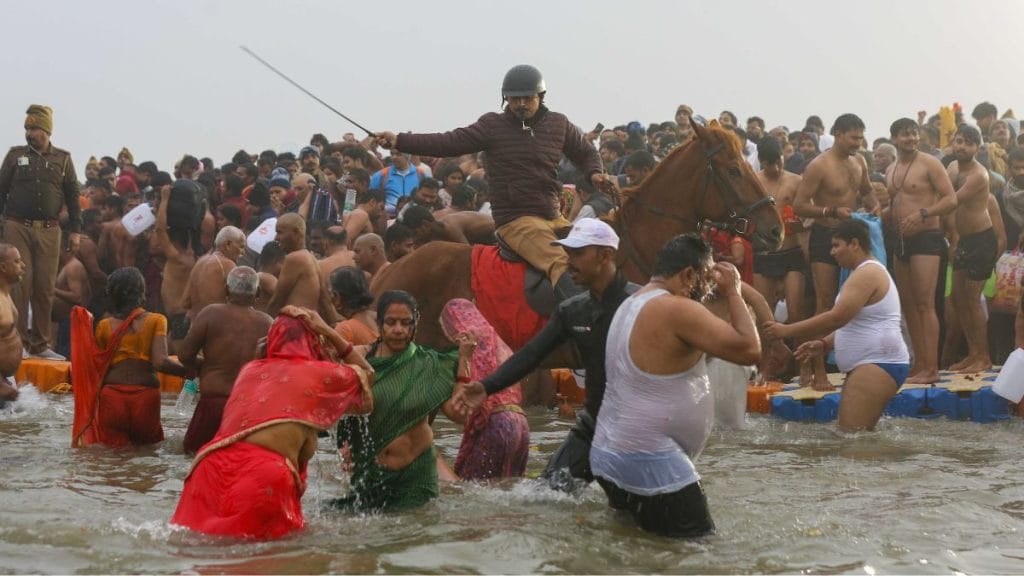
There’s so much hype and curiosity around Dome City that devotees on the other side take time out from their rituals just to see it. A portion of the domed area is open to ‘ordinary’ visitors, offering them a glimpse into how the rich are experiencing Kumbh.
Mukesh Singh, who has a bed in a free shelter, was awestruck. More than the artwork on display or the rows of restaurants, it was the sheer space and lack of crowds that stunned him.
“It does not seem like Kumbh. Such open and empty roads. The gap between the rich and the poor has come into religion as well,” he said.
(Edited by Asavari Singh)



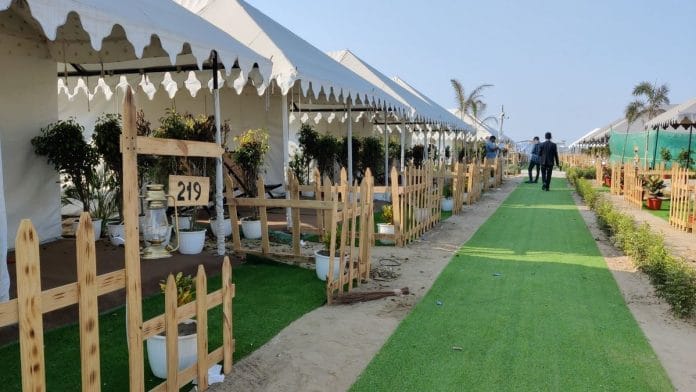



Ha! Thank Goodness no Muslims were allowed anywhere remotely near this class apartheid innovation of State-run temples being privatised for the supposedly majoritarian pilgrimage of “Naya Bharat”, where even earmarked exchequer for a whole new “temporary district” can’t prepare to prevent stampedeS from happening=yet-another money-laundering scheme to waste taxpayers’ rupees by doing what the state of Uttar Pradesh has always excelled at.
A living example of haves and haven’t! The struggling world of millions and comfortable and luxurious world of a few. This amply proves that money is extremely powerful and can buy anything and almost everything in this materialistic world even in our thoroughly religious minded nation. Incredible India, what else?
5 star journalism!!
5 star spirituality,VIP SANATHAN, mockery,organised crime against humanity,
Maha Kumbha or Maha fraud,
Why Varana is questioned, blatant lie, in the last 1500 years , religion has become a costume party. Religion means fear and control culture.
Why is that inequal when there is an opportunity for everyone at MahaKumbh. Do you choose Darma Darshan to stand in serpant queue at Tirupathi or vip or paid darshan? Do you choose to travel in a general compartment or ac coach in train? There is an opportunity cost for everything that we can choose ib this world and this separate setup at MahaKumbh is just another. Instead of stirring unwanted enemity among people you should focus on how wonderfully hundreds of thousands of people put their effort to make Maha Kumbh possible for crores of people. Please write about how volunteers and govt managed to control the such a massive crowd, write about how thousands of selfless bhakts are distributing prasadam to crores of people without charging a rupee, write about experience of the lakhs of people so more Santana Hindus can learn and participate in this holy event. Intentions are as important as actions and hope the author understands it.
Hare Krishna ?